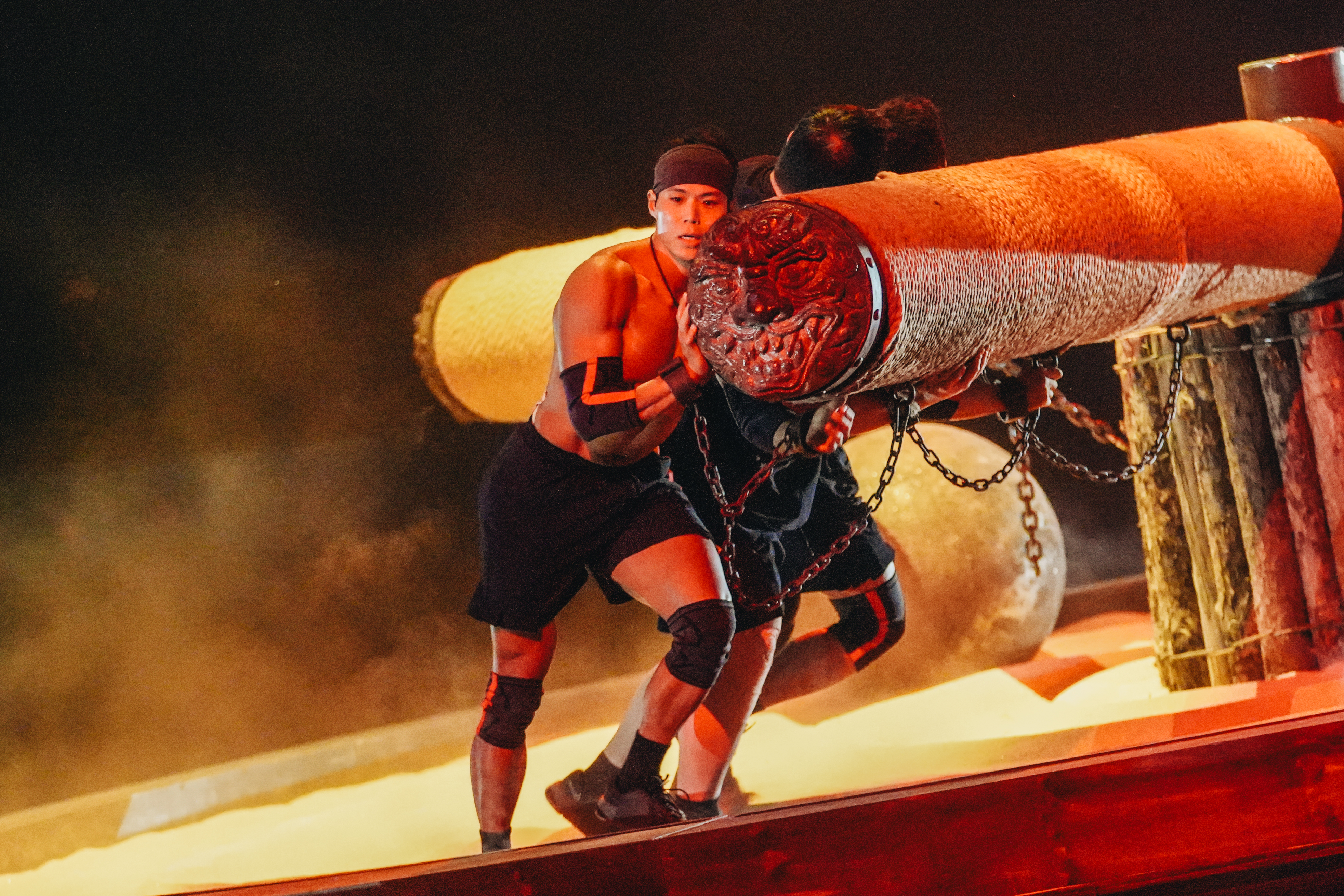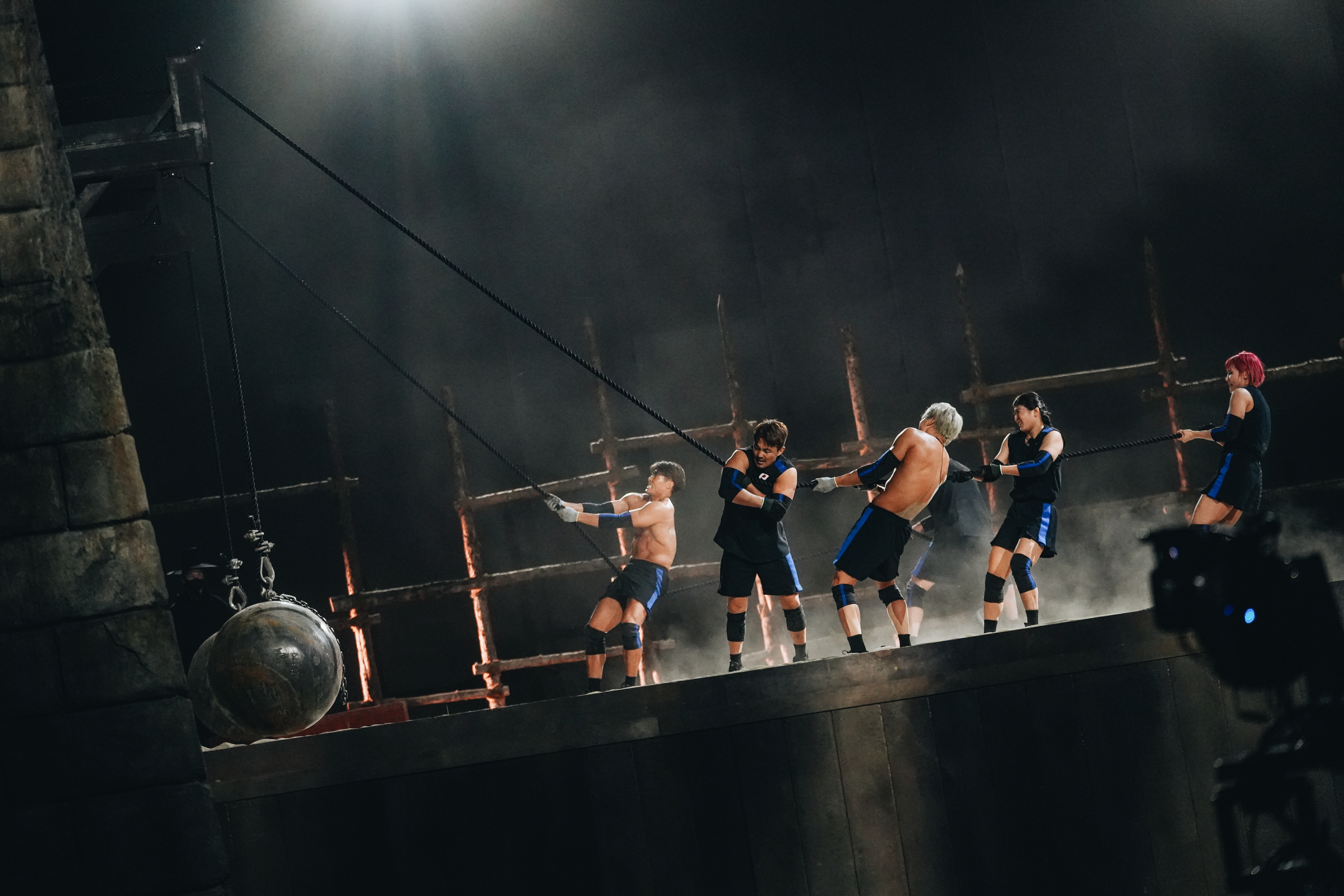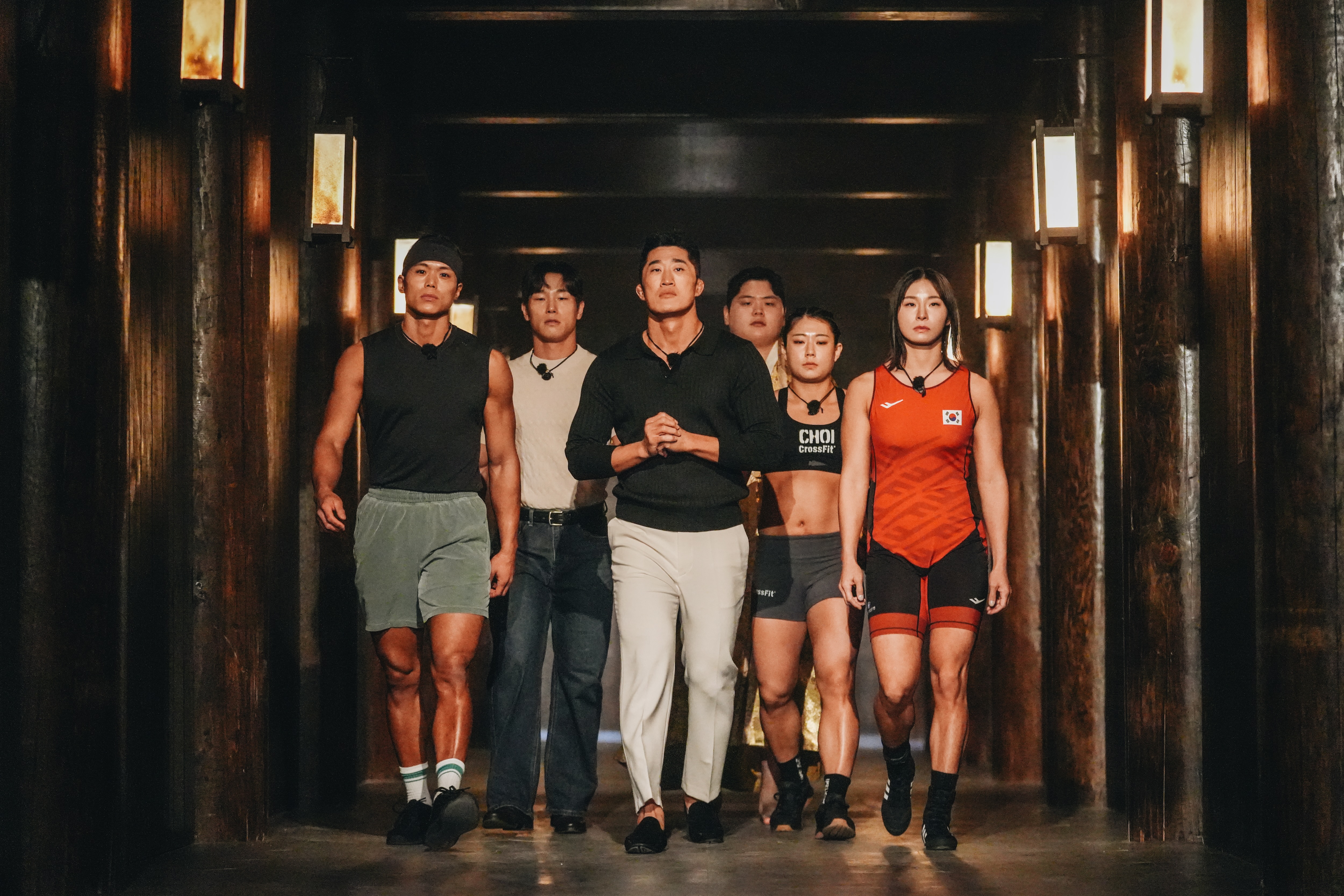Who Is the Winner of 'Physical: Asia?' Breaking Down the Final Quest and the Team That Came Out on Top
Netflix's strongman competition ended with a fierce battle between three fan-favorite teams.


After four weeks of brutal sports competition, Netflix's Physical: Asia has come to an end. The new spinoff of the hit Korean reality series put a global spin on its quest for the "perfect physique," this time pitting eight countries against each other in a team battle for national pride. Throughout the first nine episodes, the competitors were narrowed down to only four countries—Team Korea, Team Mongolia, Team Japan, and Team Australia—who were fighting to enter the finals.
On November 18, fans tuned in to see which set of elite athletes would conquer the final round to win national bragging rights, as well as a prize pot of one billion Korean won (around $700,000). Below, read on for a breakdown of the Physical: Asia finale, including how to follow the winning team.

Team Korea's Amotti competes in the 1,200-kg Pillar Push Death Match.
What happens in the 'Physical: Asia' finale?
The final episodes of Physical: Asia featured competitions between Teams Korea, Japan, and Mongolia, after the latter knocked out Team Australia in Quest 4's 1,200-kg Pillar Push Death Match. The three remaining teams began with a preliminary game in episode 10: a two-person relay race on manual treadmills. Korea came in first, traveling the most distance and getting a map that previewed the next arena.
Quest 5 began in episode 5 with a Record Match that immediately knocked out the team with the lowest score, with no death match to save them. In Castle Conquest, each team had one hour to tug a 2.2-ton cart across a sandy arena that included obstacles like a castle gate and a drawbridge. While Korea and Mongolia both completed the strength-based challenge in under half an hour, the Japan team struggled to knock down the castle gate with a battering ram and to move the loaded cart across the sand.
Korea won Quest 5 with a time of 17 minutes and 53 seconds, while Mongolia came in second with 25 minutes and 15 seconds. Japan, who couldn't get the drawbridge gate to close, crossed the one-hour mark and was eliminated.

Team Japan (from left: Yoshio Itoi, Soichi Hashimoto, Katsumi Nakamura, Nonoka Ozaki, Kana Watanabe) competes in the Castle Conquest challenge.
For the Final Quest, Korea and Mongolia competed in a six-on-six team match comprised of three games. The first game, the Wall Pushing Match, was three rounds of a reverse tug-of-war in which each team attempted to push three moving walls (weighing 100 kg, 200 kg, and 300 kg) across the line into the opposing team's territory. Mongolia quickly developed a strategy and won the first round, but Korea won the second after Yun Sung-bin and Kim Min-jae began coordinating their pushes to overpower Mongolia. Sticking with this strategy, Korea also won the third round, claiming the Wall Pushing Match.
As the losing team, Mongolia chose the Iron Ball Dragging Match next. All six members of each team were tethered to iron balls and had to take turns dragging the balls forward to reach their team's flag in under three minutes. For each of five rounds, a new iron ball would be added relative to the team's combined weight. (Korea had a slightly higher combined weight than Mongolia, at 537 kg to 518 kg.)
Get exclusive access to fashion and beauty trends, hot-off-the-press celebrity news, and more.
Both Korea and Mongolia completed all five rounds; in the final round, both teams tied at just 35 seconds remaining at the highest weight. The tie-breaking round had both teams pull the highest weight simultaneously, in a race to reach the flag. Korea grabbed their flag first, winning the Final Quest with two out of three matches without needing to complete the Infinite Tail Tag Match.

Team Mongolia's Adiyasuren Amarsaikhan and Enkh-Orgil Baatarkhuu compete in the Stone Totem Endurance challenge.
Who are the members of the winning team of 'Physical: Asia?'
Four of the six members of Team Korea had previously competed on Physical: 100 seasons 1 and 2. Team captain Kim Dong-hyun, a former MMA fighter who's now a popular TV personality, competed against Amotti on season 2 before his team was eliminated in Quest 3 (the mine challenge). Amotti, a popular CrossFitter and YouTuber, then went on to win Physical: 100 season 2 after defeating Hong Beom-seok in the final.
Meanwhile, former national team wrestler Jang Eun-sil competed in Physical: 100 season 1, and became a fan-favorite underdog before her team was eliminated in Quest 3 (the ship-moving challenge). Yun Sung-bin, an Olympic gold medalist in skeleton racing, made it to the semifinal round before he was knocked out in Quest 4's Punishment of Sisyphus challenge.

Team Korea, from left: Amotti, Yun Sung-bin, Kim Dong-hyun, Kim Min-jae, Choi Seung-yeon, Jang Eun-sil.
The two newcomers on Physical: Asia's Team Korea were Choi Seung-yeon, Korea's top female CrossFit athlete, and Kim Min-jae, a 23-year-old champion of traditional ssireum wrestling.
Since their respective seasons, Kim Dong-hyun, Amotti, Jang Eun-sil, and Yun Sung-bin have primarily worked as entertainers, influencers, and/or content creators, with some competing on other survival shows, including King of Survival: Tribal War and the Iron Squad franchise. It's expected that Choi Seung-yeon and Kim Min-jae will follow similar paths, and both still actively compete in CrossFit and ssireum, respectively.

Quinci LeGardye is a Culture Writer at Marie Claire. She currently lives in her hometown of Los Angeles after periods living in NYC and Albuquerque, where she earned a Bachelor’s degree in English and Psychology from The University of New Mexico. In 2021, she joined Marie Claire as a contributor, becoming a full-time writer for the brand in 2024. She contributes day-to-day-content covering television, movies, books, and pop culture in general. She has also written features, profiles, recaps, personal essays, and cultural criticism for outlets including Harper’s Bazaar, Elle, HuffPost, Teen Vogue, Vulture, The A.V. Club, Catapult, and others. When she isn't writing or checking Twitter way too often, you can find her watching the latest K-drama, or giving a concert performance in her car.